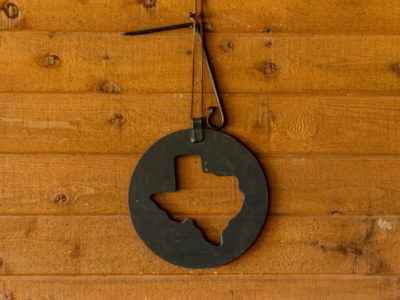Texas. The land where everything is faster, bigger and better. Or so they told me.
If we’re talking American stereotypes, look no further. Since coming to the U.S. from Europe, many Americans have asked me: How does the world view America? The real question they should ask? How does the world view Texas?
Like it or not, when internationals think U.S., they think Texas. They think rednecks, beer and shooting old cans off a tree stump in the back yard. Yes, we think that you ride horses to school. Yes, we think you all chew tobacco, live in a wooden house in the middle of a field and sleep with a shotgun on your pillow. We can’t help it, it’s just what the movies tell us.
“My international friends tend to think that we ride tractors to school, that we’re uneducated, that everyone who lives here is racist and that we are the bad ones,” said Thomas Blackwood, a Stanford senior and self-proclaimed middle-of-nowhere Texan. His family lives three hours from Austin, six hours from Houston and four hours from Dallas.
“Internationals think Texans are stupid, ignorant, racist, narrow-minded, hospitable only if you’re white, and patriotic,” said Madelene Travis, a Colorado College senior from Fort Worth.
The thing about Texas from abroad is that you only hear the bad bits. We tend to reserve our fair and impartial judgement for D.C. (unlike U.S. news reporting, the whole world follows what goes down at the White House) and New York (it’s just like London or Paris…right?).
From Texas, we hear the stories of people keeping alligators for pets and storing 20 rifles next to every door and window of the house. The other issue? When you say the South, we say Texas. People outside of the United States have barely heard of Louisiana, let alone South Carolina. So all the wild and wacky things that happen across the Southern U.S. get rolled up into the international understanding of Texas as the all-encompassing home of oddballs and alt-right libertarians.
Come senior year spring break, I decided to take myself on a Texan road trip. About to graduate, I figured it was finally time to head southwards and confront my stereotypes. The goal: to see a place I had heard so much about, often with negative connotations, with my own eyes and form my own opinions. I also hoped to be called “sweet pea” while being served sweet tea (disclaimer: unfortunately, this never happened).
Over 10 days, three friends and I—one of them a Texan herself, another a fellow international—drove some 40-odd hours right through Texas. With tents, camping stoves and open minds we passed from Colorado Springs to Amarillo, Fort Worth, Dallas, Austin, Frederiksberg, Houston, Galveston and right the way back up again.
First thoughts: I loved it. Obviously, 10 days isn’t nearly long enough to really get to know a place, let alone a state nearly half the size of Europe. But oh boy, we tried. I tasted my first ever Dutch Baby (which I felt much more comfortable about once the waitress explained what it was). I tried spiced pecans, Texas toast, frozen margaritas, kolache, brisket, breakfast tacos and more chips and queso than I can say. On the food front, Texas won me over.
I saw lush fields of green. In my head, Texas was a land of dry desert landscapes, creaking wooden saloon doors and an old man sitting on a chair on his porch with a cowboy hat on his head and a toothpick slung between his teeth. Imagine my surprise when I looked up from my book in the car to find swaths of green fields all around filled with bluebonnets, the state flower.
Every morning we would have to shake a small lake of water from the top of our tents, because of all the dew. I hadn’t realised how lush Texas was, and how vibrant the greens of new growth would be. Walking around Austin, I felt like I was in San Francisco, smelling all of the flowers and sidestepping giant aloe veras sprouting from the ground. We swam in the Greenbelt, a whole nexus of parks and natural spaces following the river through Austin, clean enough to dunk your head under.
When we weren’t frolicking in fields, we saw some breathtaking art. To everyone who thinks Texans are ignorant and uncultured—think again. Unbeknownst to us, our spring break coincided with Austin’s South By South West Festival, and we were lucky enough to catch the last weekend of frivolities. Though we weren’t prepared to buy tickets, we got into some awesome free events and soak up the artsy scene.
In Houston we visited the Rothko Chapel, which houses 14 of abstract impressionist painter Mark Rothko’s masterpieces. Right next door, we also explored the Menil Collection, an awe-inspiring gallery of Magrittes, Picassos, Ernsts, Warhols and other famed artists.
The best thing about Texas? The people. From the first server at Ye Olde Pancake Station in Amarillo (where I got that Dutch Baby) to the youth worker who let us camp in his yard in Galveston, we met some wonderful folk. I know that the guys from the stereotypes exist there too. You know, the ones who are a bit odd or who have completely different views to my own. But you know what? They exist all over the rest of the world, too.
Texas, I thank you for a wonderful spring break. Thank you for teaching me a little bit more about who you really are. The one Texan stereotype that is true? That Texans love Texas more than anything else in the world. Well, OK, maybe that’s stretching the truth a little. But in all honesty, after 10 days in the car with Dallas home-town girl Katie Lerer, I’m prepared to believe that Texas is not a state, but is in fact its very own country.



















